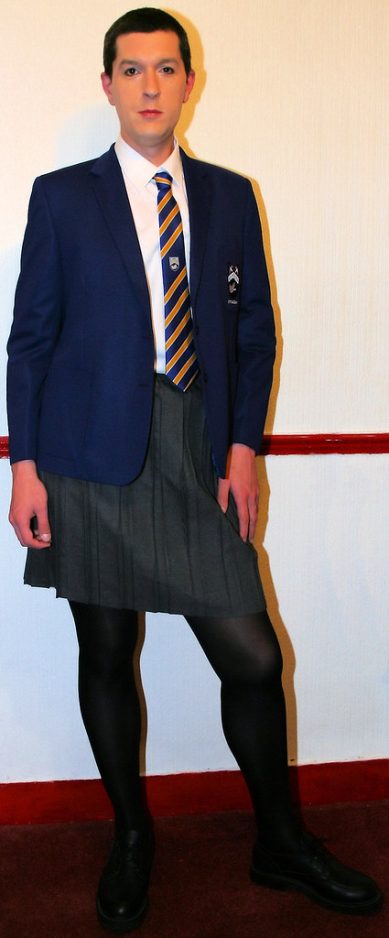Imagine waking up every day and never having to worry about what to wear to school. Every day looks the same because everyone is wearing the same outfit.
It has been thought for many years that uniforms can be beneficial to the learning environments of children, but is this true? Or is it possible that they encourage more problems to arise during day to day life for schools?
For a long time it was believed that wearing school uniforms has large benefits that sets schools that use them (primarily private schools) apart from schools that allow students to dress with less restrictions.
Despite this being common knowledge for so long, research has been found proving that school uniforms have almost no effect on student behavior.
During a study, more than 6,000 children were observed and the behavior was compared between students who attend school without uniforms to those who attend with uniforms. There was virtually no difference in the amount of absences, bullying, or academic promise that students managed to display during the course of the study.
Said information has displayed that wearing a uniform can have an effect opposite to the beneficial one it was originally thought to possess.
One of the reasons schools claimed to have their students wear uniforms is because they want it to feel less isolating and provide a sense of community among the student body. They also thought it would help to diminish cliques from forming and causing students to be left out from said cliques.
The intention of this is very pure, however, the problem started to occur when feeling alienated from their peers during school. It was said that; “those who had to wear uniforms reported lower levels of school belonging than did those who attended schools with no uniform requirements.”
Uniforms have this effect because they restrict the freedom of one’s expression and without that option the entire environment can feel very confining. This can cause students to feel like they’re losing their individuality and feeling unsafe expressing themselves in any way.
…research has been found proving that school uniforms have almost no effect on student behavior.
A member of the Crane Center for Early Childhood Research and Policy agreed with this saying that “school uniforms may not be the most effective way to improve student behavior and engagement.”
There are also many restrictions the students must face when it comes to any kind of accessorizing they may want to include.
Some uniformed schools are more lax with how much students are able to accessorize and customize their uniforms. On the other hand, many are extremely strict when it comes to any additional clothes, colors, hairstyles or clips that their students might want to wear.
One example of this is Saint Joseph’s middle school in Missoula, Montana. The dress code at the middle school states that students are required to wear uniforms and are unable to wear colors other than red, white, or navy blue. They are unable to wear hats, or scarves, and any kind of hairstyle that could be distracting is forbidden.
Many students find this specific rule especially restricting and it is easily the least distracting of the options available to them. Some students have even got in trouble for making minor non-vibrant changes to their hair.
A Saint Joseph’s student was chastised after she dyed the ends of her hair from its original dirty blonde to a light red tinge. Upon coming to school the student was approached by the principal and told that she needed to “wash it out of her hair” by the time she came back.
The student found this quite irritating and “unnecessary” as “two other kids also had their hair dyed at the time.” Said students did this without receiving any kind of punishment.
So, considering that the vast majority of children don’t enjoy uniforms, they have little to no effect on performance. If students are unable to accessorize or express themselves in any way, why do countless schools across the country continue to require uniforms?
Though this is not always the case, the vast majority of schools that require uniforms are private, though some public schools have taken to the idea through middle and high schools across the country.
One of the reasons private schools apply this strict dress code rule is to create a more disciplinary environment. Maintaining an aspect of order between the students and staff is said to be one of the schools top priorities. This is shown to be, in a way, upheld by the dress code applied.
Similarly, the schools prioritize equality as they are trying to push students to recognize that uniforms are not just a way to make everyone look the same, but to put everyone on the same level from beginning to end.
They want kids to understand that the way they dress does not determine their worth and keeping all of the kids in similar attire can prevent bullying for wearing things that may be second hand or different from all the other kids.
Despite these aspects sounding good, there is overwhelming evidence showing that students who dress for themselves are significantly more happy, social, and welcoming than those who wear uniforms.
It has been shown that wearing what you want and feeling comfortable in your own skin is “worth its weight in gold.” As cheesy as it may sound, being true to yourself can boost your confidence considerably more than if you were restricted in what you wear.
It can also create the freedom to take into account how you want to look and can grant access for a wave of creativity to flow among the student body. This can then spark new ideas, make way for friendships, and provide conversation about common interests that can be found when people are given the chance to express themselves.
The world is not kind, kids will be mean to other kids just as adults will be mean to other adults. Communities will always find something to nitpick about the way another person looks. Having everyone dress the same way can do little but accentuate those differences more.
If everyone is different then no one stands out. If everyone is different we are all the same.



